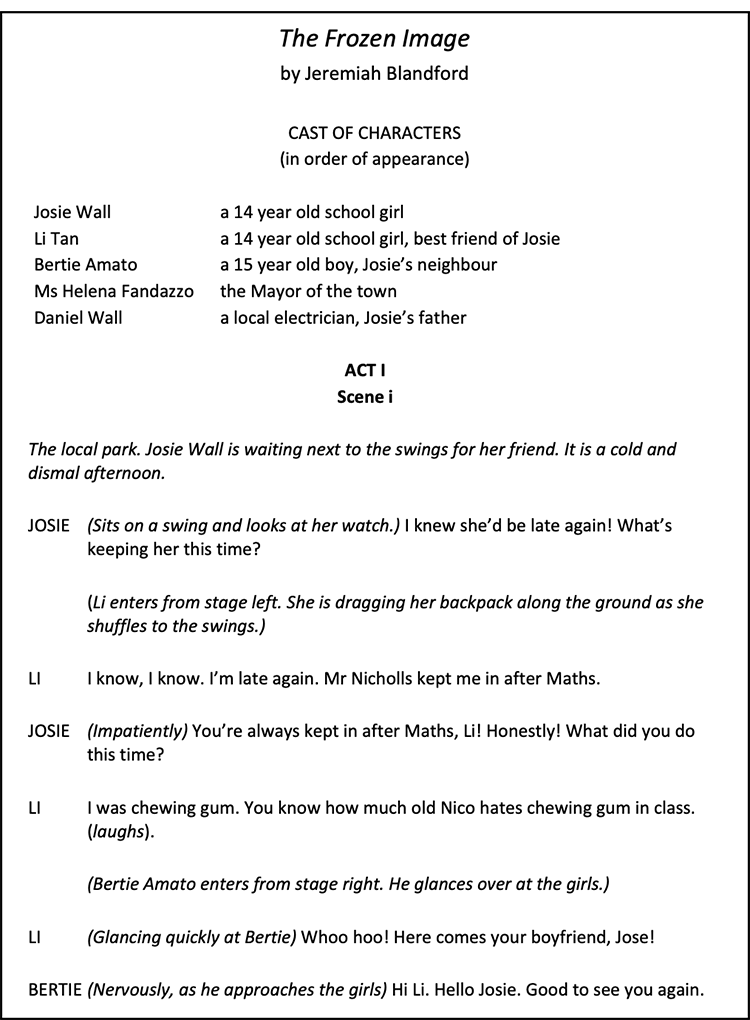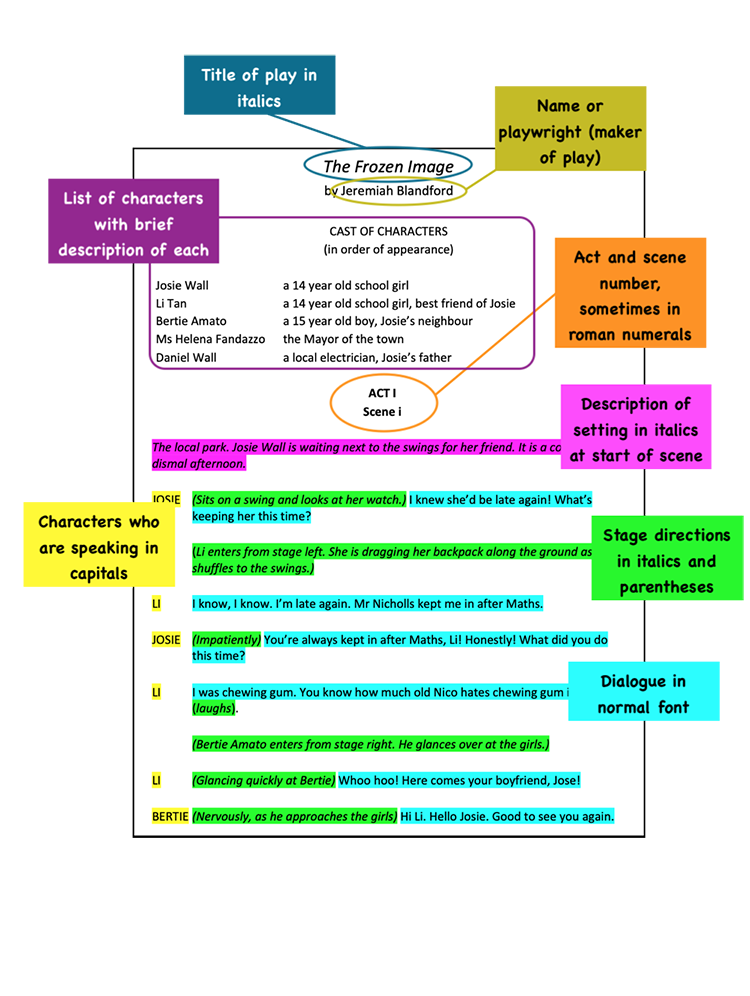Jointly deconstructing model written texts, such as play scripts and reviews, assists students to learn about the language features of that genre. When jointly deconstructing a text, teachers can use coding or annotations to identify the various elements used and their intended purpose.
In the first instance, teachers may help students to understand grammatical elements of sentences. For example, they may unpack expanded noun groups, which are common linguistic features of reviews and interpretation responses. Strategies to support this can be found in Visual Arts and Dance.
Jointly deconstructing reviews
A review gives an evaluative analysis and response to a text such as a book, film, or play. While not as sophisticated as an interpretation response, reviews nevertheless prepare students for more sophisticated writing (Derewianka & Jones, 2016). This is because they allow students to show their knowledge of a performance and dramatic elements.
Reviews have the following typical structure:
- context
- description
- evaluation (Derewianka & Jones, 2016).
Many of the language features of persuasive writing are relevant to review writing, for example, language choices with attitude, such as those that express feelings, make judgements of behaviours, or evaluate qualities. These attitudes can be amplified or softened through vocabulary choices which increase or decrease the intensity of a viewpoint.
To attend to these kinds of choices:
- The teacher explains that the purpose of a review is to summarise elements of a performance and evaluate how effective they think they were.
- The teacher presents a model text of a paragraph in a review to the class. This may need to be written by the teacher.
- The teacher reads the text aloud, pausing to clarify any unknown or ambiguous terms.
The teacher asks students to highlight:
- the key theme or idea (for example, in blue)
- dramatic elements and choices in another colour (green)
- evaluative and/or amplified adverbs or adjectives which express attitude (bold italics)
- complex or expanded noun groups (underlined)
- intended consequences (or effects) in yet another colour (yellow).
- The teacher leads a discussion, encouraging students to explain:
- how the topic sentence is supported by elaborations
- how the dance elements are used to realise intended values
- Students can later use the deconstructed paragraph as a model for their own writing.
In the text below, the response analyses and evaluates the performance of the actors and the quality of the production of the play and comments on the impact of these. The paragraph comes from
Doug Knight’s review of the play, Emerald City, and appears on
the Australian Stage website.

Curriculum links for the above example:
VCADRR038,
VCADRR039,
VCADRR045,
VCADRR046.
Jointly deconstructing and annotating play scripts
One of the key written texts in Drama is the script.
Students
- read, interpret, and perform existing play scripts
- create their own for audiences, purposes, and contexts.
The following strategy supports students to identify and annotate the key features and structures of a play script. A teacher created the below script to use as a model text.
- The teacher presents students with a short playscript or an extract/scene from a longer play.

- The teacher asks students to identify features of the script.
- The teacher notes the responses on the board.
- Drawing on the students’ responses, the teacher and students jointly deconstruct and annotate the example including the following features:
- The title and playwright (Note: ‘playwright,’ not ‘playwrite.’ Teacher may ask students why the term is spelled this way. A ‘wright’ is a maker of something.)
- List of and brief description of characters
- Labelling of acts and scenes
- The setting (The local park. Josie Wall is waiting next to the swings for her friends. Is it a cold and dismal afternoon?)
- Stage directions and performance prompts which use adjectives and adverbs (Nervously, as he approaches the girls)
- Use of different fonts, for example, stage directions in italics
- Use of tense (present tense in stage directions)
- Use of punctuation such as exclamation marks to denote expression
- Characters’ names on left hand side (often capitalised)
- Dialogue written in plain font and sentence case with no inverted commas
- Use of adjectives and adverbs to give directions to actors in relation to emotion, movement.

- The teacher leads a discussion about why the features above are presented as they are in a play script, for example:
- Why are the different fonts used?
- Why are the directions in present tense?
- How might the features and layout support readers, directors, and actors of the script?
- How might the directions support directors and actors?
- How might they limit their production and performances?
- The students use the annotated example as a resource for their future script writing.
Curriculum links for the above example:
VCADRP037,
VCADRP044.